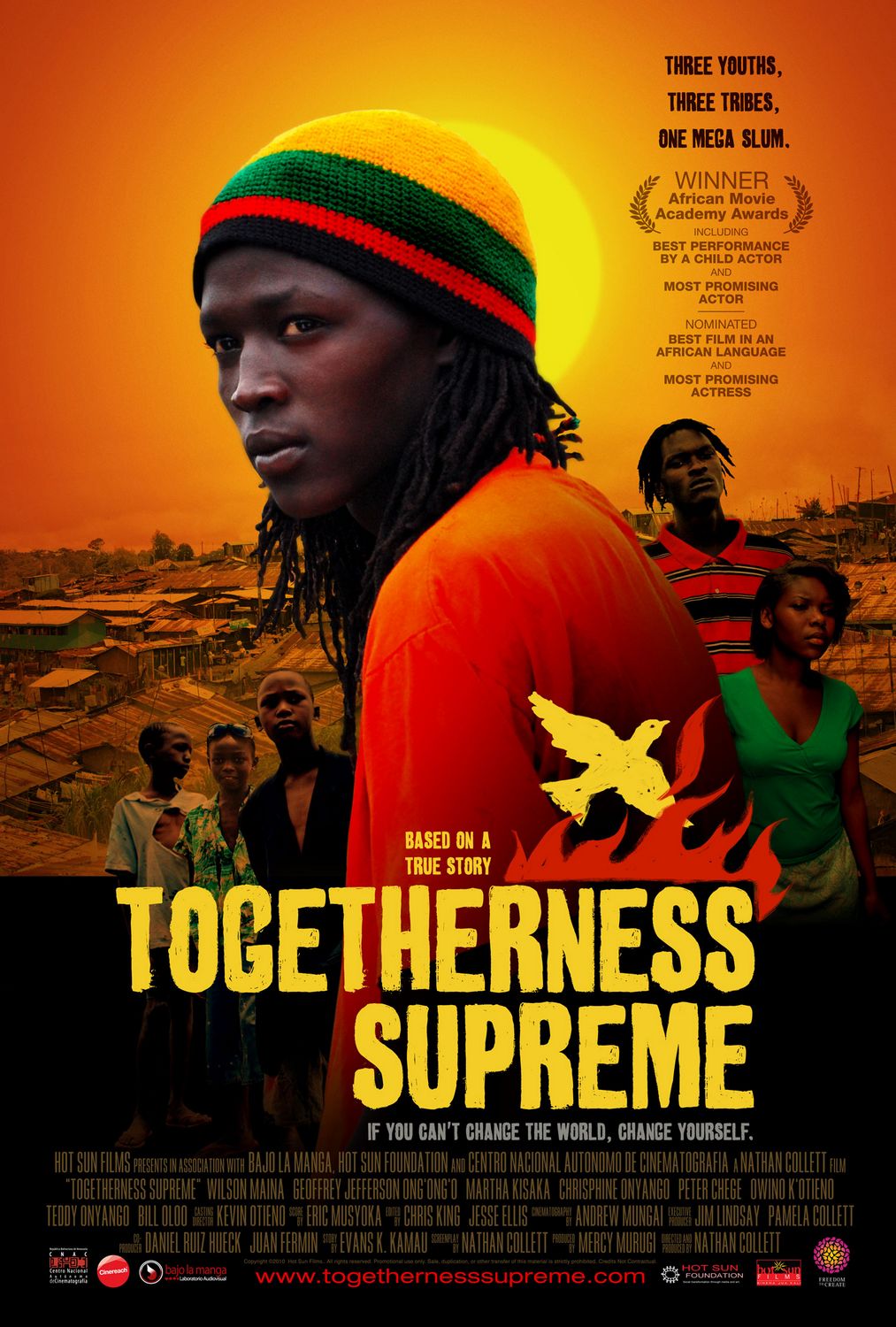Togetherness Supreme (Nathan Collett, 2010): Kenya, Venezuela
Review by William Barton. Viewed at the Santa Barbara International Film Festival 2011.

Togetherness Supreme is Nathan Collett’s feature length fiction directorial debut. In 2006, Collett received the Fulbright Fellowship grant to do research in Africa’s largest slum, Kibera, which is the setting for Togetherness Supreme. Collett not only directed, but also wrote and produced the film. Togetherness Supreme is based off of true events that occurred in Kibera. Shot in Kibera, the setting served as more than a backdrop, but it seemed to come to life as another character in this tale of love for our fellow man.
Togetherness Supreme premiered at the Vancouver International Film Festival on October 5th, 2010 and worked it’s way through the film festival circuit to the 26th annual Santa Barbara International Film Festival in early February. Togetherness Supreme won the “Best International Film Award” from the Santa Barbara Film Festival this year. Interestingly enough, this is a very prestigious award and is quite the compliment especially because it is not only the director’s first shot at a full length fiction film, but it is also the acting debut of all the lead actors. It is also the first film for cinematographer, Andrew Mungai, who did a great job at highlighting the realism of the story.
Togetherness Supreme centers around a young artist, Kamau, who was born a member of the Kikuyu tribe and raised in the Kibera slums. Kamau must overcome the stereotypes that are placed on him just because he was born a Kikuyu as the political movement dubbed “ODM” tries to democratically overthrow the ruling party. During his political activism, Kamau meets a young nurse, Alice, and becomes close friends with his neighbor Otieno. As Alice and Otieno become romantically involved, Kamau must take the sidelines and watch as his good friend Otieno mistreats his other good friend Alice. Temper’s flare as the political movement heats up and romantic interests do the same.
With a great true story like the ODM political movement and the overcoming of stereotypes, it’s hard to go wrong. Which is why I wonder why Collett added in a love triangle to the story. The story has all of the elements for a great tale, but it seems that it was misguided and the true message of the film was muddled with an underdeveloped and unnecessary love story. There is a man who seeks acceptance amongst his peers and there is a low class people who seek acceptance in their society. This seems perfect for a story about the harm of stereotypes and the meaning of justice, but then this beautiful message is put on the back burner to tell an uninteresting love story. There are plenty of films out there that tell love stories in every which way. There are fewer films that are set around such injustice and deal with relevant subjects such as political uprisings. It would have been great to see this story focus on the latter instead of the former.
Collett seems to be a promising writer/director, but his freshman effort came off as unfocused and underdeveloped. I would like to see the same movie, but with more emphasis on the political movement and the reaction of the slums to the movement instead of the emphasis on the love story. It just seemed that the love story was taking valuable time from the message of the film.
About this entry
You’re currently reading “Togetherness Supreme (Nathan Collett, 2010): Kenya, Venezuela,” an entry on Student Film Reviews
- Published:
- 02.15.11 / 10am
- Category:
- Films, Santa Barbara Film Festival 2011
No comments
Jump to comment form | comments rss [?] | trackback uri [?]